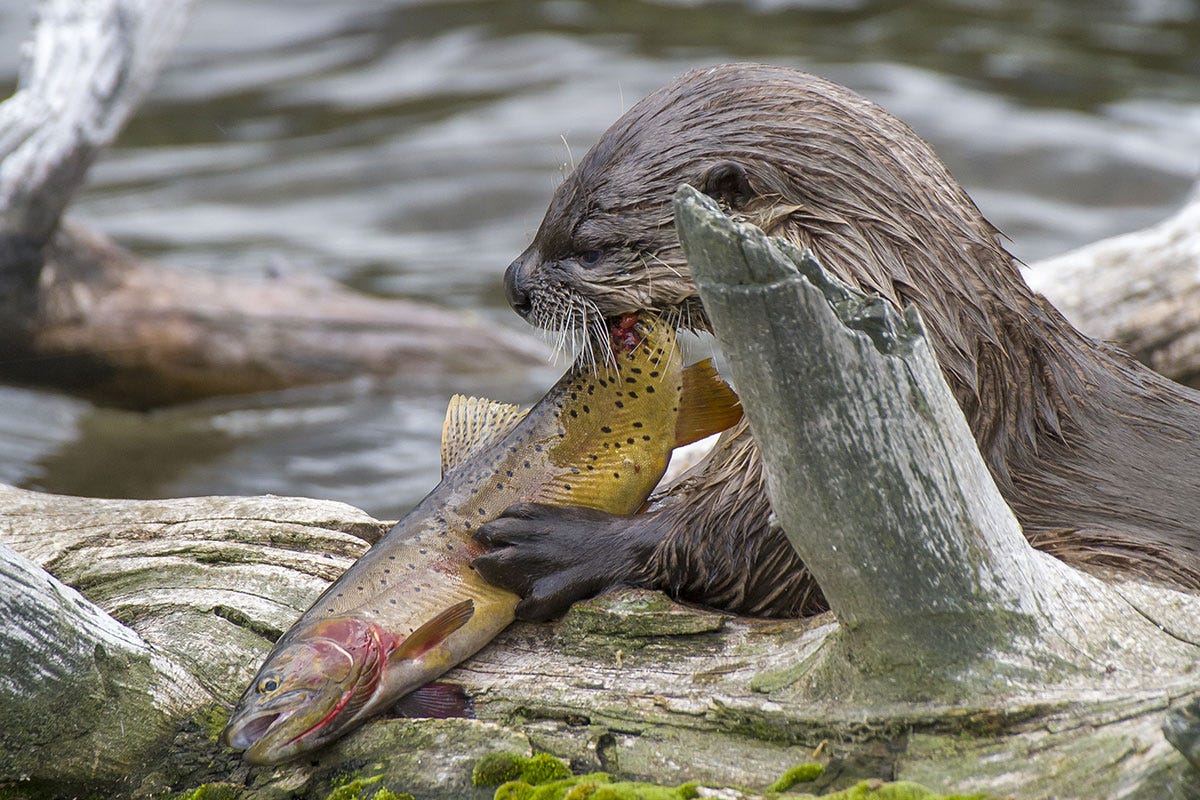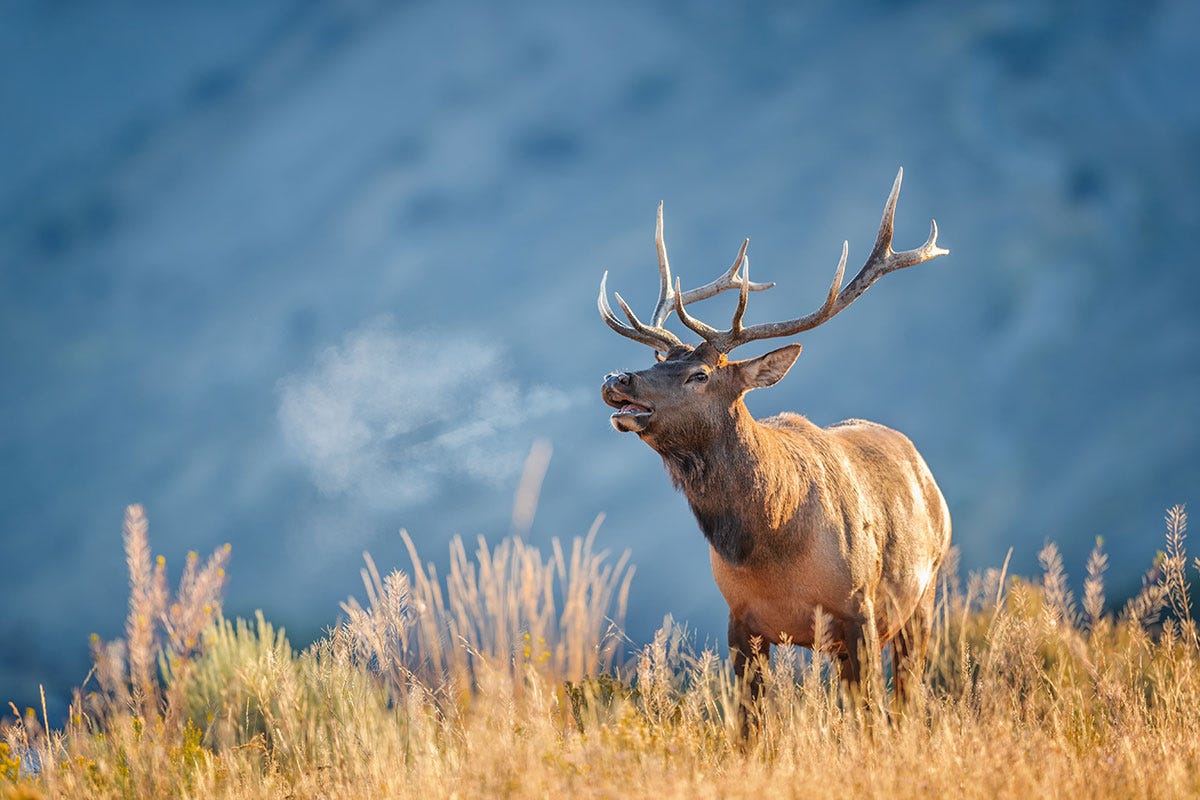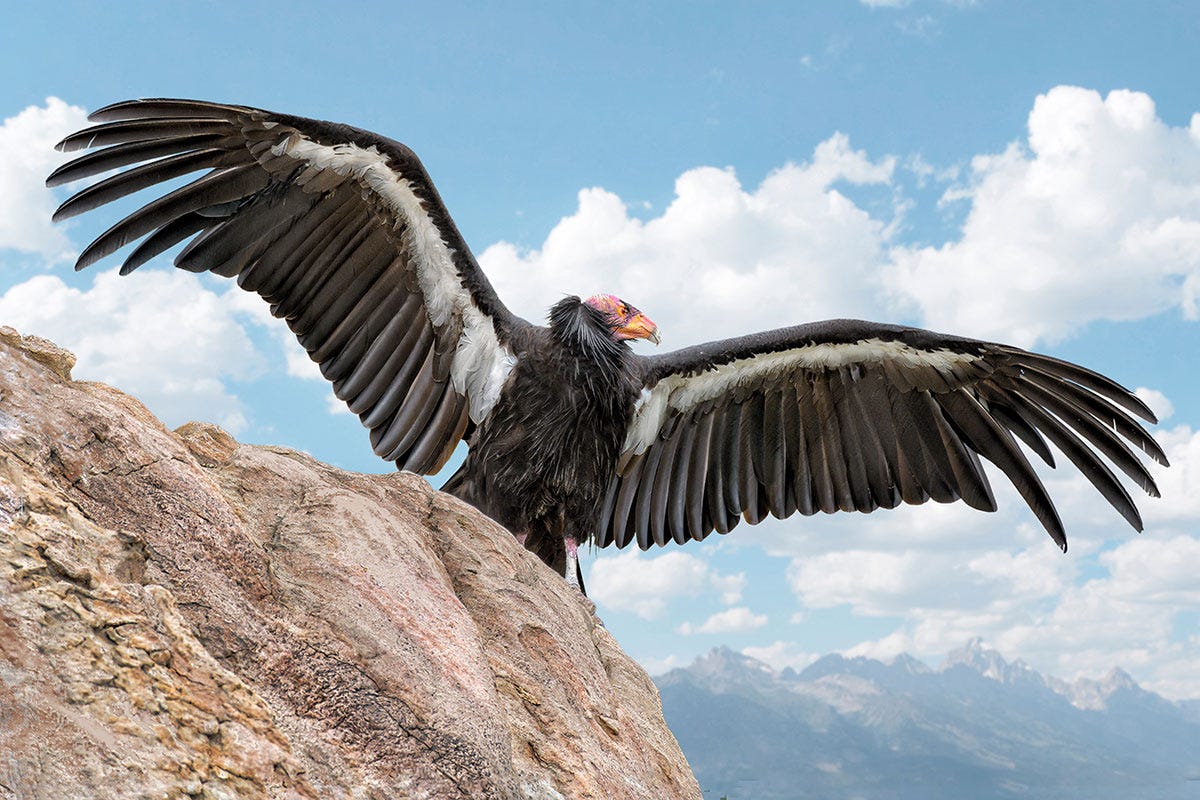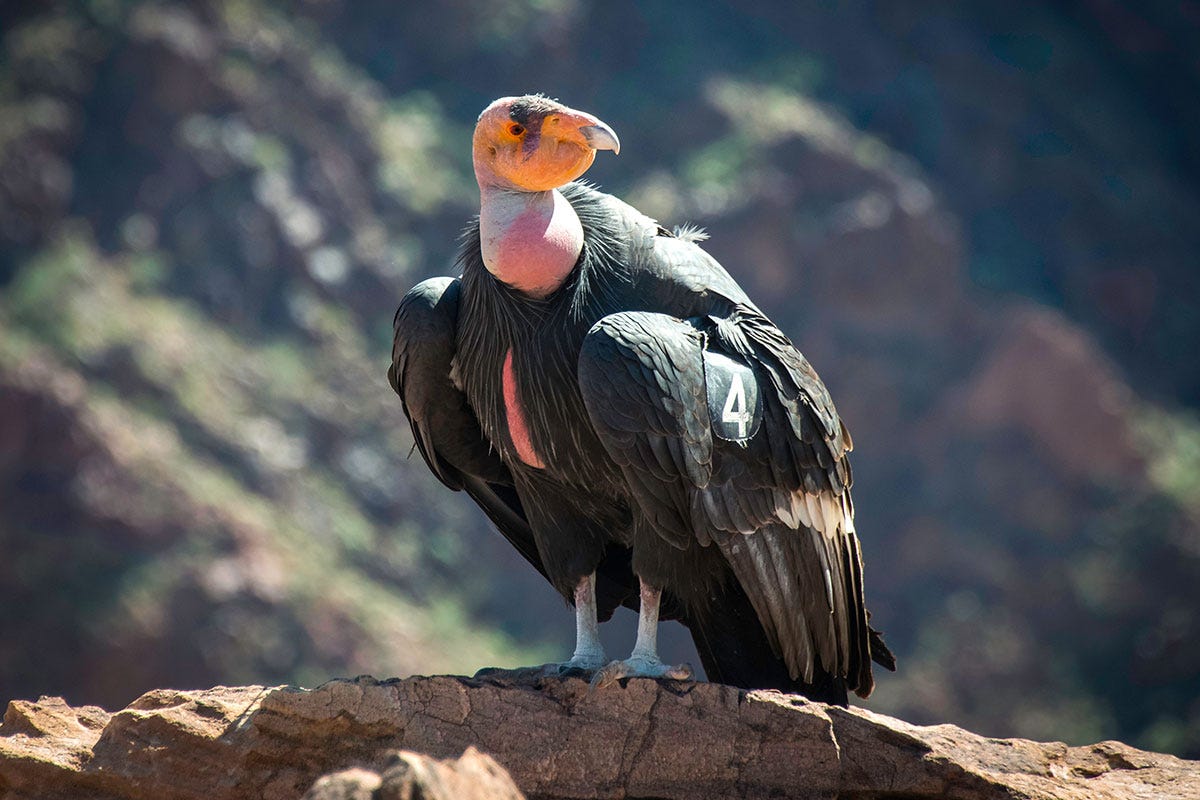Return of the Wild: Telling the Stories of Some of America’s Greatest Rewilding Triumphs
Part 1 looks at how wolves and condors returned from the brink to reshape the American landscape—and what their comebacks reveal about the power of ecological restoration.
World Rewilding Day was observed a couple of weeks ago, on 20th March, and at the time I published a post that looked at a selection of rewilding projects from around the world. Given the multiple environmental challenges that are facing the world today, from biodiversity collapse to climate instability and landscape fragmentation, rewilding has emerged as one of the most radical—and contested—ideas in modern conservation.
In today’s post, I dive into a bit more detail on rewilding projects that have been implemented in the US, covering some that I’ve talked about before, but also some that have not appeared in my Substack pages yet. These are the stories of four extraordinary rewilding projects—tales of near-extinction and revival, of people determined to heal wild places, and of nature’s astonishing resilience when given a second chance. Each example is rooted in ecological success: predators and scavengers restoring balance, habitats springing back, and species snatched from the brink to roam free once more.
There’s a lot to cover, so I will split this post over two days. You’re reading the first part here, and part two will be out tomorrow.
The Wolves of Yellowstone: Howling Back to Balance
One January day in 1995, a caravan of trucks trundled through Yellowstone’s snowy gates carrying precious cargo: 14 Canadian gray wolves, eyes peering warily from wooden crates. Among those hefting the first crate was Interior Secretary Bruce Babbitt, whose political will had pushed through a controversial plan to reintroduce wolves to a park that hadn’t seen them in 69 years. It was Yellowstone’s rangers themselves who had exterminated the last wolf pack in 1926, viewing the predator as a menace to elk and deer. In the decades that followed, those prey animals multiplied unchecked, browsing Yellowstone’s valleys to the point of destruction. By the 1980s, willows and aspens had been gnawed down by elk, songbirds had dwindled, and beavers—which rely on abundant willow for winter food—had all but vanished. The landscape was a banquet with no predators to control the guests.
All that began to change the moment those wolves bolted out of their crates and into the Yellowstone wild. Wildlife biologists kept careful watch as the new arrivals formed packs and set about doing what wolves do best: hunting elk. Almost immediately, the ecosystem’s long-stalled gears began to turn. Elk herds, once languid and unafraid, started moving, their overgrown numbers gradually thinning. Willows and aspens sprang back in the valleys where elk no longer lingered to overgraze. In turn, beavers returned to those recovering riversides—by the 2000s, multiple beaver colonies were active again where there was once only one, engineering ponds and wetlands that lured back otters, frogs, and waterfowl. Streams ran cooler and clearer as willow roots knit the banks together. The wolves even checked the coyote population (themselves prolific in the wolves’ absence), which led to more rabbits and mice for hawks, foxes, and badgers to eat.
Park biologists marvelled at the transformation: an ecological trophic cascade in full flow, triggered by a handful of wolves. More than 100 wolves now roam the Greater Yellowstone Ecosystem, their packs firmly established and even spilling into surrounding states. The valley floors, once silent, are alive with the chatter of returning birds and the splash of beaver tails. In Yellowstone, the howls of wolves have become the soundtrack of a balanced, rejuvenated wild—a vivid reminder that sometimes the missing piece of nature’s puzzle is a single family of wolves.
The Yellowstone wolf reintroduction was as much a human drama as an ecological one. There were the key players: the visionary scientists and federal officials like Babbitt who championed the predators’ return, and the local ranchers and politicians who bristled at wolves trotting past their fence lines. In those early days, tensions ran high. One cold morning shortly after the release, a young wolf from the new Crystal Creek pack ventured beyond the park boundary and was shot by a rancher—an ominous sign of conflicts to come.

But many more wolves survived and thrived, aided by intensive monitoring and public support. Park ranger recorded the soap opera lives of wolf packs and regaled visitors with tales of famous alpha pairs like 21M and 42F of the Druid Peak pack. Tourists flocked to Yellowstone’s roadsides for a chance to see a dusky shape loping along a ridgeline. Over time, former sceptics were won over by the economic boon of wolf tourism and the observable health of Yellowstone’s forests and streams.
By 2020, vegetation studies confirmed what storytellers had been saying: young aspen and cottonwood were growing tall again in Yellowstone’s northern range for the first time in decades. The wolves had literally changed the course of rivers by restoring streamside plant life. What began as an experiment has become an emblem of rewilding’s promise. In the words of one ecologist, Yellowstone is now “a region once again rich in biodiversity”—all because a chorus of howls returned to the night.
Condor Country: The Skyborne Resurrection
High above a redrock canyon in California, a massive black bird circles on wings nearly ten feet across. The California condor rides an invisible thermal, sunlight igniting pink and orange on its bald head. To see a condor soaring in the wild is to glimpse Pleistocene majesty—a creature that once fed on the carcasses of mammoths.
By the late 20th century, however, these magnificent scavengers had been reduced to a ghost of their former glory. Poisoned by lead bullets in hunter-shot carrion and pressured by habitat loss, condor numbers plummeted year after year. In 1985, wildlife biologists watching over the last few condors faced an agonizing choice: let “nature take its course” (almost certainly ending in the species’ extinction) or capture every remaining condor to breed them in captivity. The decision split the conservation community, but ultimately urgency won out. In April 1987, a renowned condor expert named Jan Hamber trekked into the mountains and carefully trapped a condor known as AC-9, the last wild condor then alive. With AC-9’s apprehension, only 22 California condors remained, all now in captivity. The wild skies of California fell empty and silent.
What followed is one of conservation’s most dramatic comeback sagas. At breeding centres in San Diego and Los Angeles, a dedicated team of biologists—Hamber among them—became surrogate condor parents. They perfected techniques like puppet-rearing to prevent young condors from imprinting on humans, and even tricked breeding pairs into laying twice as many eggs by removing the first egg (condors would lay a second, a strategy known as double-clutching). Year by year, the captive flock grew: awkward pink-headed chicks gave way to hulking juveniles with charcoal feathers.
By 1992, it was time to risk putting condors back where they belonged—riding the thermals over wild canyons. The first releases in central California were tentative; a few birds were lost to power line collisions and other perils as they learned to live wild again. But the effort pressed on. In the late 1990s, condors were reintroduced to Arizona’s Grand Canyon region, and soon the giant vultures with numbered wing-tags were once more a part of the American tableau, gliding above sandstone cliffs.
By 2022, the condor’s recovery reached a new milestone: the Yurok Tribe of Northern California, in partnership with federal agencies, released the first condors to soar over the coastal redwoods in more than a century. Elders from the Yurok people watched with tears in their eyes as the sacred Prey-go-neesh (condor) took to the sky above their ancestral lands, fulfilling a cultural and ecological vision years in the making. From that release pen emerged young condors, wings stiffening as they caught their first wild wind, heralding a homecoming long overdue.
With each successive cohort of condors released, the wild population became more resilient. They formed breeding pairs that began nesting in cliffside cavities and giant sequoia hollows, raising chicks that knew only the wild. By the numbers, the condor story is astonishing: from 22 individuals in 1987 to over 500 today, with more than half of those flying free. In rugged pockets of California, Arizona, Utah, and Baja Mexico, roughly 337 condors now soar in free-flying populations as of the end of 2022. Each bird is closely monitored (field crews track their tags and even perform health check-ups, sometimes capturing condors to treat lead poisoning), but the goal of two self-sustaining wild populations no longer seems like a fantasy. Hikers in the Grand Canyon’s South Rim now sometimes look up to see a condor spiralling overhead—a sight no one witnessed for decades.
The condor’s road to recovery has been bumpy, marked by setbacks from avian diseases to the constant threat of lead contamination. Yet the trajectory is undeniably upward. Scavenging on deer, elk, and livestock carcasses, condors perform the vital ecological role of “cleaning up” the wild—recycling death into life. And as living symbols, they remind us that even the largest land bird in North America, once given up for lost, can reclaim its blue kingdom. In condor country, the skies are wild again.
From the howl of wolves in Yellowstone to the wingbeats of condors over California, these rewilding triumphs share a common thread: nature’s capacity for renewal when given our humility and help. The measurable outcomes are clear—degraded valleys rejuvenated with foliage and fauna, species pulled back from extinction’s edge into self-sustaining populations, and keystone actors restored to their roles as ecosystem engineers.
To be continued….







Good news. I cried for this.